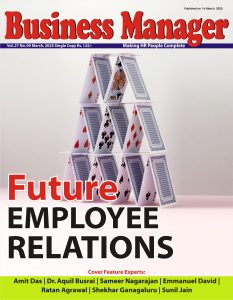COVID-19 crisis had caught us unawares. The lockdown caught us un-prepared. Let’s put our thoughts on how to plan for the resumption of business, post lockdown – especially in offices and workplaces which are enclosed spaces, especially air-conditioned spaces, etc.
The following will be the factors I think we need to keep at the back of our mind:
1. COVID-19 is a viral disease, hence contagious. The coronavirus is three times as infectious as flu. So if one person is infected, he can infect 3 people and if these 3 people pass it on to 3 more and so on, there can be 59000 infections.
People with Medical Conditions and certain age bands are in the high-risk category. Medical cure or inoculation is still not present for this virus.
2. We already have electronic scanners (for detectors for bombs etc.) and security personnel manually scanning people in most large complexes (workspaces, public spaces, and residential spaces). People are used to security measures.
3. There is awareness in the public about the COVID-19. The government and media have been sharing information. The understanding of the criticality of the crisis exists.
4. Work from Home (WFH) has gained acceptance as an alternate way to work and deliver. People are learning how to be productive in a remote working situation. For 50% of the jobs, work from home (WFH) is not a viable option. For the remaining 50%, WFH is a viable option. During the lockdown, WFH suffers because of a lack of Internet connectivity-based infrastructure and a lack of domestic help. Productivity tracking tools help track WFH, online calling/video meeting tools allow for interactions. These restrictions will be lifted post lockdown. WFH productivity will improve.
5. The downturn in the Economy will last for at least 6-12 months from the release of lockdown. Wages and salary bills will need to be optimized.
With the above in mind, I am putting down certain things People Management function may want to do to ensure best results when the lockdown lifts (in fact, you may want to defer the non-critical resources coming to office till these actions are taken):
For the remaining 50%, WFH is a viable option. During the lockdown, WFH suffers because of a lack of Internet connectivity-based infrastructure and a lack of domestic help. Productivity tracking tools help track WFH, online calling/video meeting tools allow for interactions. These restrictions will be lifted post lockdown. WFH productivity will improve.
1. Take an online medical inventory from your employees (a simple google form should do). Identify the people with a high risk of COVID-19
Based on what we know now, those at high-risk for severe illness from COVID-19 are:
- People 65 years and older
- People of all ages with underlying medical conditions, particularly if not well controlled, including:
- People with chronic lung disease or moderate to severe asthma
- People who have serious heart conditions
- People who are immunocompromised: Many conditions can cause a person to be immunocompromised, including cancer treatment, smoking, bone marrow or organ transplantation, immune deficiencies, poorly controlled HIV or AIDS, and prolonged use of corticosteroids and other immune weakening medications
- People with severe obesity (body mass index [BMI] of 40 or higher)
- People with diabetes
- People with chronic kidney disease undergoing dialysis
- People with liver disease
What this will help you do: You should tell the high-risk group not to join back in the office for the first 30 days post lockdown. Perhaps they can WFH.
2. Create a Declaration form and request employees to let HR know (online form) if anyone within their Family has tested positive for COVID-19. Everything should be mobile responsive.
What this will help you do: Request the employee to self-quarantine for 14 days. Perhaps they can WFH. Let the managers know so that they can help the employee work / contribute in the best way possible.
3. Testing for COVID-19: Continue the thermal testing at the security point. Also check out the COVID-19 testing kits, which don’t need a doctor. But they do need some instructions to be followed. “Bengaluru-based biotech startup Bione said on Thursday that it has launched a rapid COVID-19 at-home screening test kit. The company claims that the kit, priced between ₹2,000 and ₹3,000 depending on global supply, is easy to use and displays accurate results within minutes.
A statement from the company said that the screening kit is available for sale on its platform bione.in after approval from the requisite medical regulatory authorities. It added that, under normal circumstances, the kits can be received within 2-3 days of placing the order via their platform.”
What this will help you do: Manage the panic in the workplace. If people cough or sneeze, other workers will get paranoid. Use these kits to take decisive actions and manage panic.
4. Invest in COVID-19 Sanitisation tent – this should be installed at all entry points (doors, maintenance lifts, stairs, etc.). These tents are in short supply..
Brief the Security vendor team and give them strict guidelines on the same. In fact, they may help you build these sanitization tents. Do note that they will need a couple of days to train their people on how to use these tents effectively.
What this will help you do: This will ensure that employees traveling to work are sanitized and do not become passive carriers of the virus which may be because of touching public objects.
5. Ensure adequate supply of masks and sanitizers: It is important to know how to use these masks too (https://www.who.int/emergencies/diseases/novel-coronavirus-2019/advice-for-public/when-and-how-to-use-masks). Just like we have hand paper towel dispensers in washrooms, we can have mask dispensers at entry points along with sanitizers.
The tricky piece will be to follow these as a part of everyday life in the next 6-12 months at the least. A top-down approach to information dissemination to the employees on the above measures BEFORE they return to work will be important. Communication through small video on the process and policies by the top management followed up by zoom meeting sessions and easy to understand corporate communication posters in the premises will be needed.
Best of luck for handling the ‘return of the employee’ to the workplace. I hope you found the article useful.























